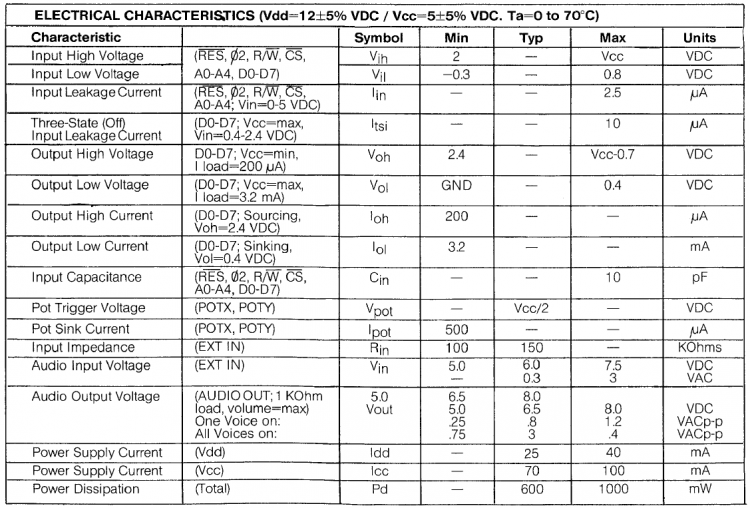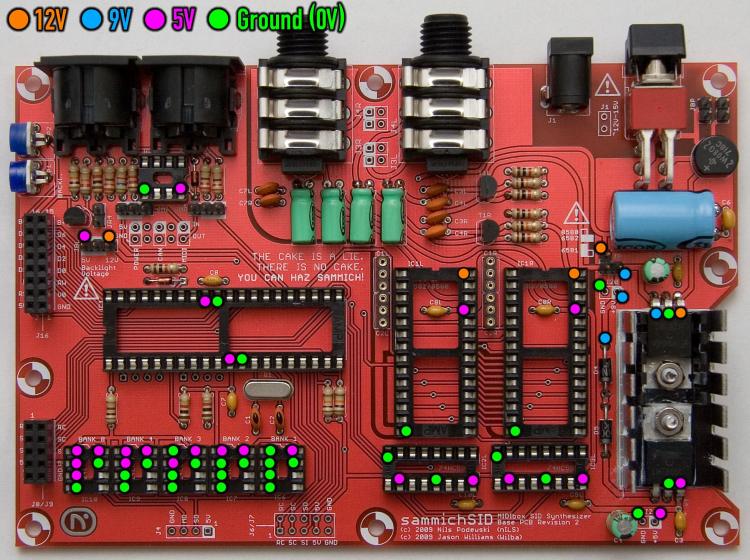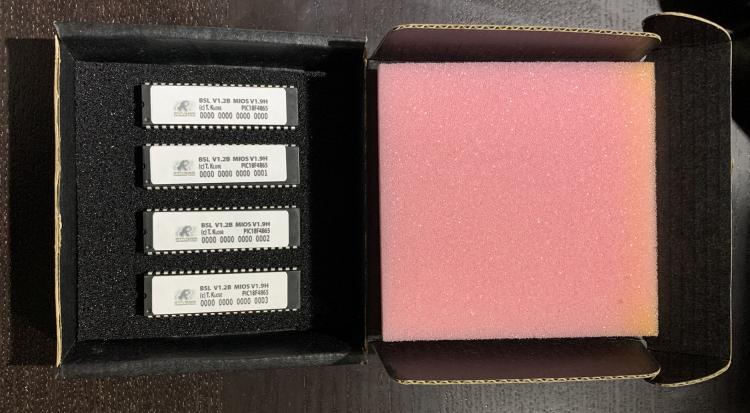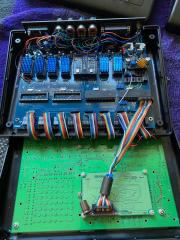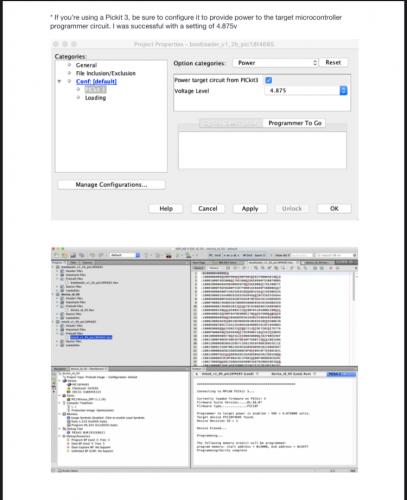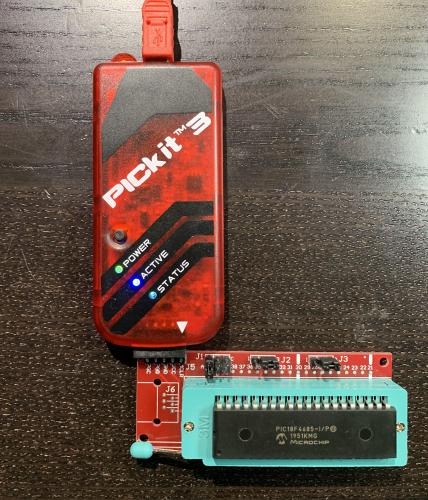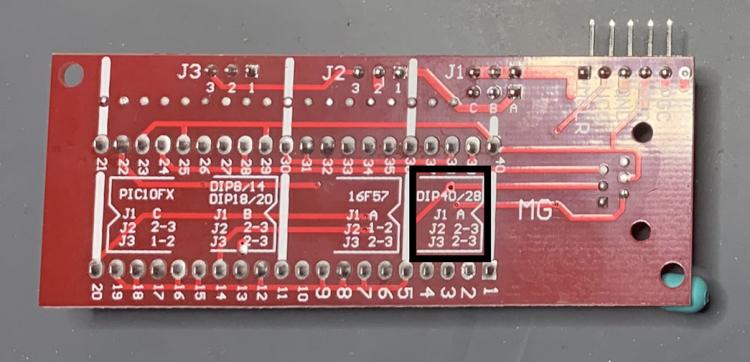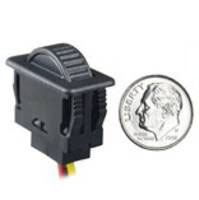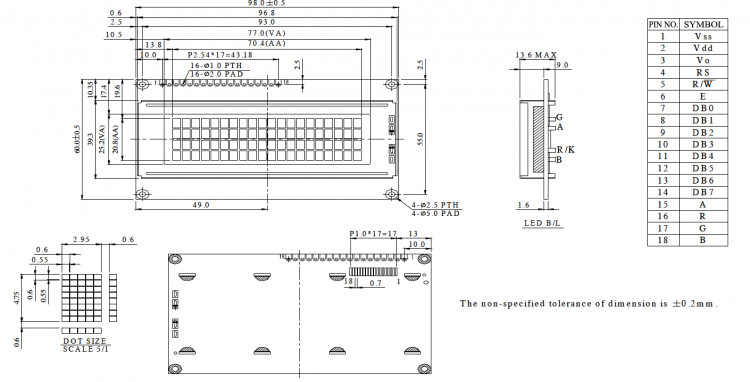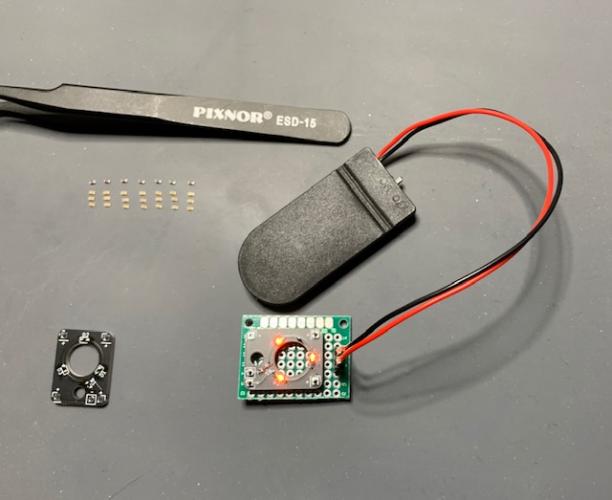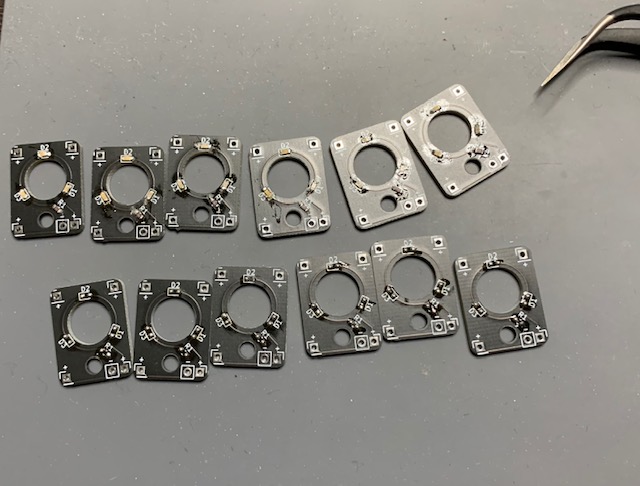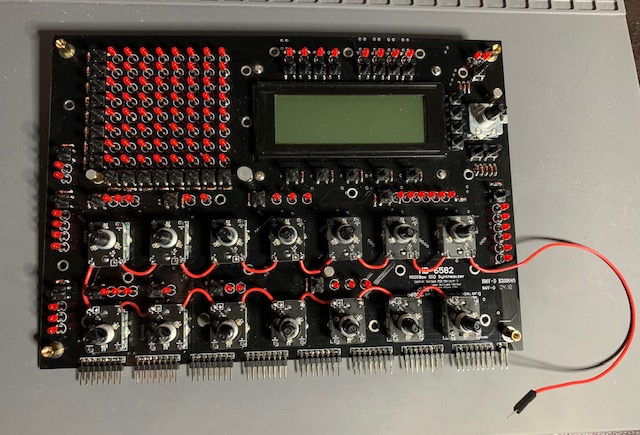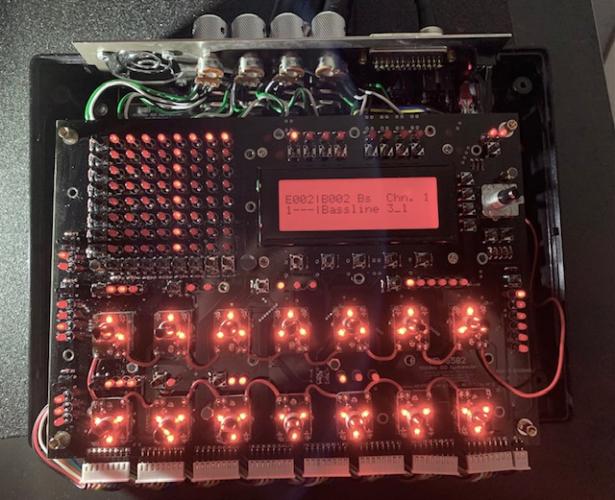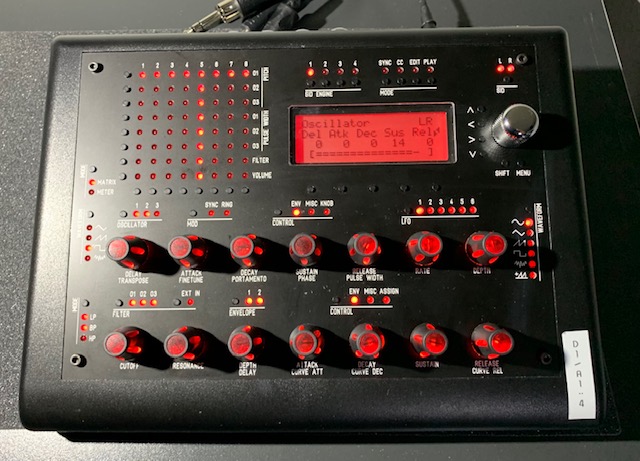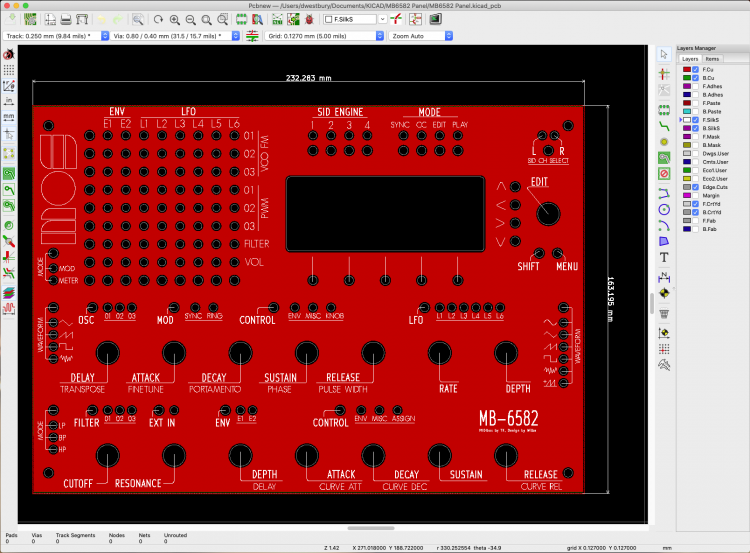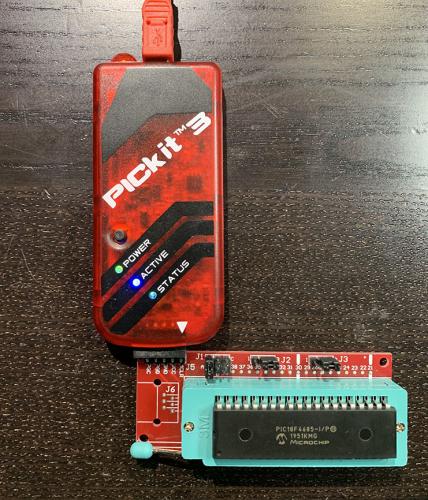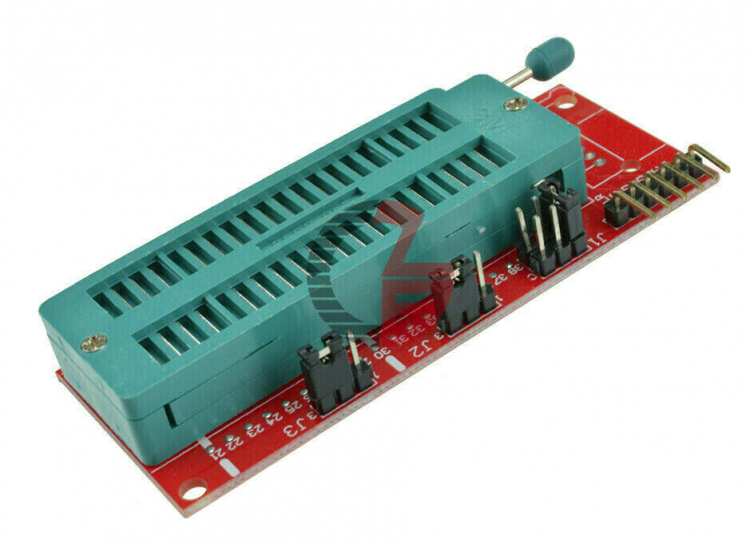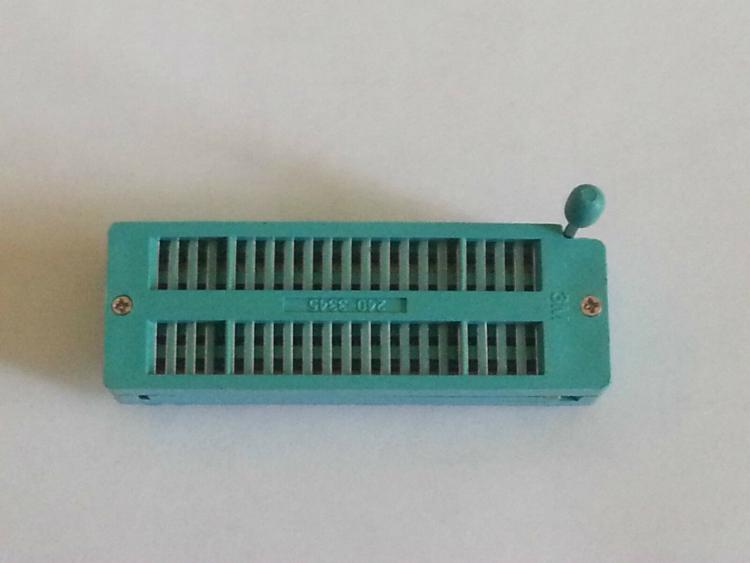-
Posts
274 -
Joined
-
Last visited
-
Days Won
26
Content Type
Profiles
Forums
Blogs
Gallery
Everything posted by dwestbury
-
The recommendation to modify the board was based on speculation. This turned out not to be necessary in my testing... You can simply drop the Arm2SID set into the required sockets and jam away. The second (dummy) Arm2SID is basically only there to intercept the Chip Select signal and pass it along to the active Arm2SID, which performs it's double-duty, then passes the audio-out for the second SID back via the bridge cable. I'd imagine that the only real reason that someone might want to purchase an Arm2SID over two regular ArmSIDs is to save a little money. The Arm2SID set costs ~48 eur versus two separate ArmSIDs @ 28 eur each or 56 eur for the pair. So really only a modest savings of ~8 eur per pair, but when you multiply that by the four cores for a fully populated MB-6582, now you're up to a 32 eur build cost difference.
- 88 replies
-
- sid replacement
- sid clones
-
(and 4 more)
Tagged with:
-

Where can I download modern pickit programming software fpr windows
dwestbury replied to Al99's topic in MIDIbox SID
The status text should show that Programming and Verification are complete. -

Where can I download modern pickit programming software fpr windows
dwestbury replied to Al99's topic in MIDIbox SID
This process can be very frustrating when you're trying to figure out where a particular problem is. My own posts in these forums can certainly attest to that. I spent days and days struggling through various dead ends, until I finally found a process that ultimately worked well for me (e.g., the document linked above). Along the way, I realized that the MIDI interface I was trying to use (a Native Instruments Komplete Audio 6 Mk2) was not properly passing SysEx messages to my PICs via MIOS. This was one of my first issues. Unfortunately, I had completely destroyed my PIC and base PCB with all my removing and de-soldering and part replacements, while I worked that out. Now I have an 'iConnectivity MIO XL', which is one of the MIDI interfaces on the MIDIBox Interface Whitelist (http://wiki.midibox.org/doku.php?id=midi_interface_whitelist). Other issues I encountered included some mismatched capacitors on the crystal above my PIC, which made communication synch to MIOS impossible. I also had at least one bad PIC that accepted the bootloader from MPLAB, but wouldn't function at all in my MB-6582. In my case, taking some time away from the issue to clear my head was key, combined with some very useful feedback and patient input from the community in these forums. -

solved sammichSID help : swinsid vs real 6581
dwestbury replied to wardg's topic in Testing/Troubleshooting
Good to hear you nailed it. Cheers and congrats. -

solved sammichSID help : swinsid vs real 6581
dwestbury replied to wardg's topic in Testing/Troubleshooting
From the same spec doc (link above), you can get a sense of the power supply current draw and total power dissipation to expect. 6581 SID Characteristics Stresses above those listed under “Absolute Maximum Ratings” may cause permanent damage to the device. These are stress ratings only. Functional operation of this device at these or any other conditions above those indicated in the operational sections of this specification is not implied and exposure to absolute maximum rating conditions for extended periods may affect device reliability. Unfortunately I'm not quite sure where to direct your attention next (beyond my remote diagnostic capabilities), but I'm sure others will have ideas. Once again, good luck! -Darrell -

solved sammichSID help : swinsid vs real 6581
dwestbury replied to wardg's topic in Testing/Troubleshooting
That minor of a variation shouldn't be a problem. According to the specs posted here: https://www.waitingforfriday.com/?p=661, the 6581 can handle 17v, although I'd never risk that! Given that your SwinSIDs are working properly, you shouldn't have to worry about your audio out (SID pin 27) or the amplifier circuitry, but you could still have an issue with either your filters capacitors (C1L, C1R, C2L, C2R) or your audio-in path (J6LR 1/4" jack for Audio in, or either C6L or C6R). SwinSIDs don't use external filter caps and they don't support external audio in, so issues in these areas wouldn't affect SwinSID audio output performance, but they could affect a real SID. Good luck! -

solved sammichSID help : swinsid vs real 6581
dwestbury replied to wardg's topic in Testing/Troubleshooting
If you're following the official sammichSID build guide (http://www.midibox.org/dokuwiki/lib/exe/fetch.php?media=projects:sammichSID_build_guide_v1_0.zip), you will have undoubtedly noticed the voltage test chart on page 18. The chart is great, but it's slightly incomplete, in that it leaves out the voltage test for VDD in the upper right corners of the SID sockets, which should read ~12v for 6581s or ~9v for 8580s respectively. Here's an updated chart that includes the additional test points. According to the build guide, a 12v reading is ideal, but any reading between 12 - 10.5v should still work with 6581s. Good luck. -

Where can I download modern pickit programming software fpr windows
dwestbury replied to Al99's topic in MIDIbox SID
Depending on where you're located, the back and forth shipping costs, combined with the costs of cores themselves, could make the whole process untenable. It might be cheaper for you if I simply create four fully functional cores, with: > Bootloader v1.2b > MIOS 1.9H > MB-6582 Firmware (e.g., setup_mb6582.hex) > Individual device IDs (e.g., 0 - 3) This would cost about $50 USD + shipping (in a CORSTAT antistatic box). Cheers, -Darrell -
-

Where can I download modern pickit programming software fpr windows
dwestbury replied to Al99's topic in MIDIbox SID
Agree with @m00dawg regarding the need to specify that the PICKIT should provide power to the Chip during programming. That’s spelled out on page 2 of the doc I linked to above... -
That’s awesome @m00dawg. Glad to hear that this approach worked out and your long standing project is moving ahead! Cheers...
-

Where can I download modern pickit programming software fpr windows
dwestbury replied to Al99's topic in MIDIbox SID
The jumper settings you chose on the expansion board pictured should follow the recommendations printed on the bottom of the board for a DIP 40 IC (e.g. a dual inline package chip, with 40 pins) > J1 = A > J2 = pins 2 & 3 > J3 = pins 2 & 3 -
Couldn't agree more... In hindsight I made 2 rookie mistakes: 1) only buying the 150 ohm SMD resistors (leaving myself with no choices) and... 2) testing with a 6.6v battery source, because I was only concerned with functionality and I didn't even think about final state brightness levels while I was building Now I'm thinking that a useful course correction could be to install one of these thumbwheel pots into the side of my case, since that would allow me to adjust the LED levels to taste, depending on room brightness, etc. Keep everyone posted if I ever get there ;-)
-
Encoder backlighting could add as much as ~840mA in power draw to your MB-6582 (e.g., ~14 encoders with 3 * SMD LEDs @ 20mA peak ea.) Before I decided to go for it, I measured the total load of my MB-6582 @ ~650-700mA, which included the mainboard (with 8x 8580 R5 SIDs) and the standard fully populated control surface. My build is using the RECOM 5v SREG @ 1.5A (mouser: 919-R-78B5.0-1.5), which still has plenty of headway, but I decided to tap into the 9v line anyway, based suggestions in Dale's documentation (https://github.com/dwhinham/encoder-backlight-pcb). As I mentioned above, 9v seems to be a bit much for my taste, because *the lights are blinding*... So, I'll probably look to step that down to find the sweet spot.
-
These RGB char displays use 18 pins instead of the standard 16, which means there's separate power input for Red, Green and Blue. I posted a pic in the gallery of the approach I took with one of my MB-6582's. Basically I was able to use a single pot on a tiny piece of protoboard to send variable power into Green pin. I sent the full 5v source into the Red pin, then used the pot to mix in a bit of Green and voila, a nice Amber color that nicely matched my LEDs ;-)
-
If you need a standard LCD color, like green or blue, I’d suggest sourcing from AliExpress, because you can get a few of them for ~$3 USD each. If you need a unique color like Orange/Amber, I’d suggest getting the Adafruit RGB display and connecting your 5v power source to each of the RGB inputs through a set of 3 * 10K pots, which you can adjust individually to achieve the exact color desired.
-
Humbled to be part of such a distinguished group! Appreciate all the effort to demystify the process and make the tools approachable :-) -Darrell
-

Where can I download modern pickit programming software fpr windows
dwestbury replied to Al99's topic in MIDIbox SID
The procedure here might be useful: https://1drv.ms/w/s!AtmSvwylfFJaggnN1TtalEzGQK1C?e=sRlAiG -
N/A
- 88 replies
-
- sid replacement
- sid clones
-
(and 4 more)
Tagged with:
-
As far as I know, ARMSID emulates the latest 6581 and 8580 releases (R4AR and R5 respectively), so the best sounding versions of each chip. Delta was definitely composed for the 6581, whereas my ARMSIDs are setup to emulate an 8580, so there's going to be some character differences there. I also have a pair of SwinSID Ultimates coming in the mail (one of these days) from Poly.play, so it'll be interesting to hear how they stack up.
- 88 replies
-
- sid replacement
- sid clones
-
(and 4 more)
Tagged with:
-
I finally got a chance to build and integrate these awesome encoder backlighting PCBs. With such a clever and functional design from @d0pefish, I had no excuses! The one impediment for me was having to learn some basic SMD soldering, but @Hawkeye's videos on the subject made it much easier ;-) I'm currently powering the lights with a 9v source, but I think this makes them a bit too bright and they illuminate the whole bottom half of the control surface.
-
Finally started messing around with this design in KiCAD and, I'm really liking it! Think I might get it made soon :-) Thanks @listen202 for sharing!
-
-
Are you talking about this programmer board? https://www.ebay.com/itm/133174280268?var=432516796181&mkevt=1&mkcid=28&chn=ps ..or, if you prefer to "build vs. buy" your programmer, you can always order just the Zif socket itself and breadboard / protoboard the rest https://www.ebay.com/itm/ZIF-Socket-40-Pin-Made-by-3M-Ships-Same-Next-Day-FAST-SHIP-US-SELLER/171035842033?hash=item27d287d5f1:g:CAQAAOxy88lRXuHN



